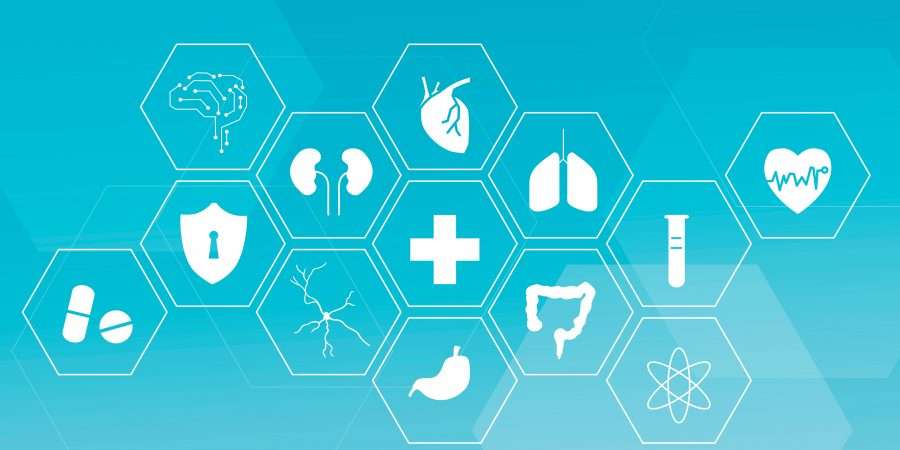50 Terminologies With Their Short Definitions Used in the Healthcare IT Industry
Here is a list of 50 commonly used terms in healthcare IT, along with their brief definitions:
1. EHR (Electronic Health Record): A digital record of a patient’s health history, including medical appointments, prescriptions, test results, and more.
2. EMR (Electronic Medical Record): A digital record of a patient’s medical history, including appointments, prescriptions, test results, and more.
3. PHR (Personal Health Record): A digital record of a patient’s health history that they can access and update themselves, including appointments, prescriptions, test results, and more.
4. HER (Health Information Exchange): A system that allows different healthcare providers to share and access a patient’s health information.
5. HIS (Hospital Information System): A digital system used by hospitals to manage and store patient health information, including appointments, prescriptions, test results, and more.
6. LIS (Laboratory Information System): A digital system used by laboratories to manage and store patient test results and other health information.
7. RIS (Radiology Information System): A digital system used by radiology departments to manage and store patient imaging and other health information.
8. EMRAM (Electronic Medical Records and Analytics Maturity Model): A rating system used to assess the maturity of an organization’s electronic medical records and analytics capabilities.
9. HIE (Health Information Exchange): A system that allows different healthcare providers to share and access a patient’s health information.
10. CI (Clinical Informatics): The use of information technology to improve patient care.
11. HI (Health Informatics): The field of study that deals with the acquisition, storage, retrieval, and use of health information.
12. HIA (Health Information Administration): The management of health information, including its collection, storage, retrieval, and use.
13. HIM (Health Information Management): The field of study that deals with the management of health information, including its collection, storage, retrieval, and use.
14. HIMSS (Healthcare Information and Management Systems Society): A professional organization for healthcare IT professionals.
15. CHIME (College of Healthcare Information Management Executives): A professional organization for healthcare CIOs and other IT leaders.
16. AHIMA (American Health Information Management Association): A professional organization for health information management professionals.
17. EHRs (Electronic Health Records): Digital records of a patient’s health history, including medical appointments, prescriptions, test results, and more.
18. EMRs (Electronic Medical Records): Digital records of a patient’s medical history, including appointments, prescriptions, test results, and more.
19. PHRs (Personal Health Records): Digital records of a patient’s health history that they can access and update themselves, including appointments, prescriptions, test results, and more.
20. HIEs (Health Information Exchanges): Systems that allow different healthcare providers to share and access a patient’s health information.
21. HISs (Hospital Information Systems): Digital systems used by hospitals to manage and store patient health information, including appointments, prescriptions, test results, and more.
22. LISs (Laboratory Information Systems): Digital systems used by laboratories to manage and store patient test results and other health information.
23. RISs (Radiology Information Systems): Digital systems used by radiology departments to manage and store patient imaging and other health information.
24. EHRAMs (Electronic Medical Records and Analytics Maturity Models): Rating systems used to assess the maturity of an organization’s electronic medical records and analytics capabilities.
25. HIEs (Health Information Exchanges): Systems that allow different healthcare providers to share and access a patient’s health information.
26. CIs (Clinical Informatics): The use of information technology to improve patient care.
27. HIs (Health Informatics): The field of study that deals with the acquisition, storage, retrieval, and use of health information.
28. HIAs (Health Information Administrations): The management of health information, including its collection, storage, retrieval, and use.
29. HIMs (Health Information Management): The field of study that deals with the management of health information, including its collection, storage, retrieval, and use.
30. HIMSSs (Healthcare Information and Management Systems Societies): Professional organizations for healthcare IT professionals.
31. CHIMEs (College of Healthcare Information Management Executives): Professional organizations for healthcare CIOs and other IT leaders.
32. AHIMAs (American Health Information Management Associations): Professional organizations for health information management professionals.
33. EHR certification: A process through which EHRs are reviewed and certified by an independent third party to ensure they meet certain standards.
34. EHR adoption: The process of implementing EHRs within a healthcare organization.
35. EHR implementation: The process of installing and configuring EHRs within a healthcare organization.
36. EHR Interoperability: The ability of EHRs to communicate and exchange data with each other.
37. EHR usability: The degree to which EHRs are easy to use and meet the needs of clinicians.
38. EHRs in the cloud: EHRs that are hosted on remote servers and accessed over the internet.
39. EHR data: The information contained within an EHR, including patient medical records, test results, and more.
40. EHR data security: The measures taken to protect the confidentiality, integrity, and availability of EHR data.
41. EHR data privacy: The legal and ethical principles governing the use and disclosure of EHR data.
42. EHR data standards: The interoperability standards that govern the format and structure of EHR data.
43. EHR data mining: The process of extracting valuable insights from large data sets.
44. EHR data analytics: The application of statistical and computational techniques to EHR data.
45. EHR data visualization: The process of representing EHR data in a graphical or pictorial format.
46. EHR data sharing: The process of exchanging EHR data between healthcare organizations.
47. EHR data exchange: The process of exchanging EHR data between healthcare organizations.
48. EHR data interoperability: The ability of EHR data to be shared and exchanged between different systems.
49. EHR data security breach: An unauthorized access, use, or disclosure of EHR data.
50. EHR data de-identification: The process of removing personal identifiers from EHR data.


